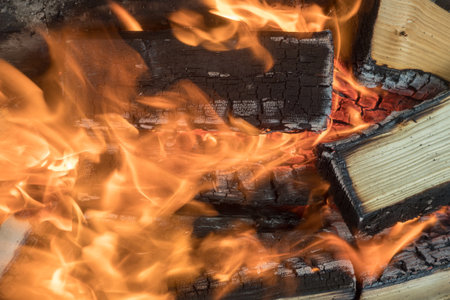Introduction to FIRE and Its Growing Popularity
The FIRE movement—short for Financial Independence, Retire Early—has been making waves across the United States. No longer just a fringe idea among finance enthusiasts, FIRE is quickly becoming a mainstream aspiration for people from all walks of life. At its core, the movement encourages individuals to save aggressively, invest wisely, and ultimately build enough wealth to gain true freedom over their time. In an era where traditional paths to retirement seem increasingly uncertain, more Americans are seeking ways to break free from the nine-to-five grind long before age 65.
This shift isn’t just about quitting work early—it’s about redefining what the American dream looks like. Instead of chasing material possessions or climbing corporate ladders indefinitely, FIRE followers are choosing intentional living, prioritizing experiences over things, and aiming for a life that aligns with their values. As this movement grows in popularity, so do the myths and misconceptions surrounding it. In this article, we’ll dive into some of the most common misunderstandings about FIRE and set the record straight.
2. Myth: FIRE is Only for High Earners
One of the most persistent myths about the FIRE (Financial Independence, Retire Early) movement is that it’s only attainable for people with six-figure salaries or those working in high-paying industries like tech or finance. The truth? Everyday Americans from all walks of life are successfully pursuing FIRE by leveraging resourcefulness, smart planning, and disciplined saving—regardless of their income bracket.
Real Stories: Achieving FIRE on a Modest Income
FIRE isn’t reserved for Wall Street bankers or Silicon Valley engineers. Across the U.S., teachers, nurses, blue-collar workers, and small business owners are proving that financial independence is possible by living below their means and making intentional choices. The key isn’t how much you make, but how much you keep—and how wisely you invest it.
How Regular Folks Are Making FIRE Work
| Income Level | FIRE Strategies | Example Actions |
|---|---|---|
| $35,000–$50,000 | Frugal living, side hustles, low-cost index funds | Shared housing, meal prepping, rideshare driving on weekends |
| $50,001–$75,000 | Aggressive debt payoff, 401(k) maxing, DIY repairs | Used car driving, vacationing locally, automating savings |
| $75,001–$100,000+ | House hacking, real estate investing, advanced tax strategies | Renting out rooms, investing in duplexes/triplexes, Roth IRA conversions |
The Real Secret: Mindset Over Money
Pursuing FIRE is more about mindset than paychecks. It’s about reimagining what’s “enough,” prioritizing values over consumerism, and embracing habits that support long-term freedom. Whether you’re earning $40K or $140K a year, the same core principles apply: save aggressively, invest wisely, and spend intentionally.
![]()
3. Myth: FIRE Means Extreme Frugality
One of the most persistent myths about the FIRE movement is that achieving financial independence requires living an ultra-frugal lifestyle—think eating ramen noodles every night, skipping every social event, and never spending a dime on anything “fun.” It’s easy to see where this stereotype comes from. The image of penny-pinching and relentless sacrifice gets attention, but it’s far from the reality for most people pursuing FIRE in America today.
The Reality: Balanced Budgeting, Not Deprivation
Let’s set the record straight. The heart of FIRE isn’t about depriving yourself; it’s about making intentional choices with your money. People who reach FIRE aren’t just cutting costs—they’re aligning their spending with their values. Sure, some folks do go hardcore and eliminate nearly every expense, but for most, it’s about finding a sustainable balance. That means budgeting realistically for things that matter—like travel, hobbies, or nights out with friends—while cutting back on what doesn’t add value to their lives.
Smart Spending Strategies
Instead of focusing on extreme frugality, successful FIRE followers use strategies like zero-based budgeting, tracking expenses, and prioritizing high-impact savings opportunities (like housing or transportation). They might shop at Costco or hunt for deals, but they also know when it’s worth paying more for quality or experiences that bring them happiness. It’s less about saying “no” to everything and more about saying “yes” to what truly counts.
A Life Worth Living
Ultimately, FIRE is about designing a life you love—not just one you can afford. You don’t have to live in a tiny house or skip every coffee run to get there. By focusing on mindful spending and realistic goals, you can work toward financial independence while still enjoying the journey. Remember: it’s your story to write, and your version of FIRE should reflect what matters most to you.
4. Myth: FIRE is About Quitting Work Forever
One of the most persistent myths about the FIRE (Financial Independence, Retire Early) movement is the idea that it’s all about quitting your job and never working again. In reality, FIRE isn’t just an escape hatch from the traditional 9-to-5; it’s about gaining control over your time and having the freedom to choose how you spend your days. For many in the FIRE community, reaching financial independence means being able to pursue meaningful work, start side hustles, or dedicate more time to passion projects—without worrying about a paycheck.
Let’s break down what “retirement” really means for people who achieve FIRE:
| Traditional Retirement | FIRE Approach |
|---|---|
| Stop working altogether at age 65+ | Gain flexibility to choose when, where, and how to work at any age |
| Limited income sources (mainly Social Security or pension) | Diverse income streams: investments, part-time jobs, businesses |
| Focus on leisure and relaxation only | Pursue passion projects, hobbies, volunteering, or entrepreneurial ventures |
| Work becomes a thing of the past | Work becomes optional and purpose-driven |
The Freedom to Redefine “Work”
The heart of FIRE is not about running away from responsibility—it’s about running toward fulfillment. Many people who reach financial independence find themselves busier than ever, but they’re busy doing what truly matters to them. Whether it’s launching a nonprofit, mentoring others, or turning a side hustle into a main gig, FIRE allows you to redefine what work means on your own terms.
Examples of Post-FIRE Paths:
- Pursuing Creative Passions: Writing a novel, painting, music production—finally focusing on talents that may have been sidelined during the grind.
- Starting a Business: With less financial pressure, many experiment with entrepreneurship or consulting in fields they love.
- Giving Back: Volunteering full-time or getting involved with causes close to their hearts without worrying about lost income.
- Flexible Work: Taking seasonal gigs, teaching workshops, or freelancing on projects they enjoy.
The Bottom Line
FIRE isn’t about abandoning work forever; it’s about crafting a life where work is chosen—not required. It empowers you to seek purpose and personal growth through activities that align with your values. By breaking free from financial constraints, you gain the power to design your own version of success—whether that includes paid employment or not.
5. Myth: You Have to Sacrifice Today’s Happiness for Tomorrow
If you’ve ever heard that pursuing FIRE means living like a hermit or depriving yourself of all joy until retirement, you’re not alone. This misconception is one of the most persistent myths about the FIRE movement in America. The truth? Building financial independence doesn’t mean putting your happiness on hold—it’s about creating a sustainable balance that lets you enjoy life now and later.
It’s Not About Extreme Frugality
FIRE isn’t about eating ramen noodles every night or never going out with friends again. While some people choose a more minimalist path, the majority focus on mindful spending—prioritizing what truly brings value and cutting back on what doesn’t. It’s less about strict deprivation and more about intentionality with your money.
Sustainable Happiness Over Sacrifice
The real secret to thriving on the FIRE journey is finding ways to integrate happiness into your daily life. That might mean cooking at home with family, enjoying free outdoor events, or splurging occasionally on experiences that matter most to you. Sustainable happiness comes from knowing your “why” and designing a lifestyle that aligns with your values—not chasing trends or keeping up with the Joneses.
Balance Is Key
Pursuing FIRE shouldn’t feel like punishment. Instead, think of it as building a flexible life where you’re not chained to a paycheck. By striking a healthy balance between saving for tomorrow and savoring today, you can avoid burnout and actually look forward to both your present and future self. Remember, FIRE is about freedom—freedom to choose how you spend your time and money, both now and down the road.
6. Reframing American Success Through the FIRE Lens
When you hear “the American Dream,” what comes to mind? Maybe it’s a sprawling house in the suburbs, two cars in the driveway, and a corner office with your name on the door. For decades, success in America was measured by outward symbols of wealth and a relentless work ethic that left little room for personal freedom. But as the FIRE (Financial Independence, Retire Early) movement gains traction, a fresh perspective is emerging—one that challenges these traditional ideas and invites us to redefine what true success looks like.
The Shift: From Accumulation to Autonomy
FIRE isn’t just about pinching pennies or giving up lattes; it’s about reclaiming your time and living life on your own terms. More Americans are realizing that the race for ever-more possessions doesn’t necessarily bring happiness. Instead, theyre embracing a lifestyle focused on intentional spending, smart saving, and investing for future freedom. The new definition of success centers around autonomy—having the flexibility to choose how you spend your days rather than being chained to a paycheck.
Building Wealth With Purpose
The old narrative told us that working longer and harder was the only way forward. But those following the FIRE path are proving otherwise: they’re building wealth with purpose, aligning their money with their values, and finding fulfillment outside of traditional career milestones. Whether it’s traveling more, spending extra time with family, or pursuing creative passions, FIRE advocates know that true prosperity is about quality of life—not just quantity of dollars.
Encouraging an Inclusive Vision of Success
This shift isn’t just for high earners or tech workers—it’s accessible to anyone willing to rethink their habits and priorities. By focusing on financial independence, Americans from all backgrounds can break free from societal pressures and craft a version of success that fits their unique dreams. The conversation around FIRE is helping dismantle long-standing myths and making room for a more inclusive, inspiring vision of what achievement can look like in the modern era.
So if you’ve ever felt boxed in by outdated expectations or wondered if there’s more to life than climbing the corporate ladder, take heart: the FIRE movement is showing us all that success is evolving. With courage, intention, and a willingness to challenge convention, anyone can build a future defined not by what they own—but by how freely they live.


